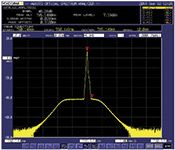Blink and You Miss It—Catching Fleeting Catalytic Intermediates by High-Speed 785 nm NIR Raman Spectroscopy
It is only in the last two decades that Raman spectroscopy has begun to realize its potential as an almost universally applicable analytical technique from materials and life sciences applications to point of care analysis. This is primarily thanks to the availability of compact laser sources, high sensitivity cameras and high resolution compact spectrometers. In this application note the use of a stable high power NIR 785 nm laser is shown to be critical in achieving high time resolution and high signal to noise ratios while allowing for both fast and slow processes to be captured simultaneously.
Catching Transient Species
The weakness of detectors in the NIR region (800–1050 nm) with quantum efficiency dropping off over this range from ca. 40% to 0% is a key drawback of 785 nm Raman spectroscopy. Typically long exposure times and spectral averaging are required to achieve a good signal to noise level, however this approach seriously reduces the time resolution achieved (to mins) and means that weak signals for compounds that are present for only a few 100s of milliseconds cannot be observed. Using more efficient NIR detectors (e.g. back thinned CCDs) does not usually solve this problem due to etaloning that can be difficult to suppress. This drawback can be circumvented by a combination of efficient collection optical arrangements and above all high laser light fluxes. With a stable high powered laser (500 mW at sample) and a large confocal volume for collection to limit sample damage, time resolutions as low as 100 ms per spectrum can easily be achieved.

As an example, a oxidation reaction in which H2O2 is added to a solution containing a precatalyst is chosen. In this reaction only 0.25 mM precatalyst is present (far below that which can be detected by Raman spectroscopy but its absorption at 785 nm means that its spectrum is resonantly enhanced) and H2O2 is added to give a final concentration of 250 mM which decreases slowly over time. Within 1 s of addition of H2O2, however, the precatalyst becomes activated with an intermediate that is present only with a maximum concentration of 0.05 mM for 0.5 s and has an absorption band near 785 nm which results in enhancement of its Raman spectrum by ca. 10 000 times through resonance. However, it is observed only because high signal to noise spectra can be recorded at 200 ms intervals.

Lasers for Raman Spectroscopy
By far the most popular wavelength used for Raman spectroscopy is 785 nm, as it offers the best balance between avoiding fluorescence, absorption of the laser light (and Raman scattering) by the sample and therefore heating effects, and the limits to detector sensitivity. The lasers available at 785 nm are diode lasers, however, a narrow line width (<3 cm-1 for condensed phases such as solids and solutions and even narrower for gases) is essential for Raman spectroscopy in order to resolve individual Raman bands. The Cobolt 08-NLD 785 nm laser addresses all of the important performance features in a compact footprint and ensures reliability thanks to the proprietary manufacturing technique called HTCure™.

Cobolt AB
Vretenvägen 13, 17154 SOLNA, Sweden
tel. 46 8 545 912 30
Website: www.cobolt.se
